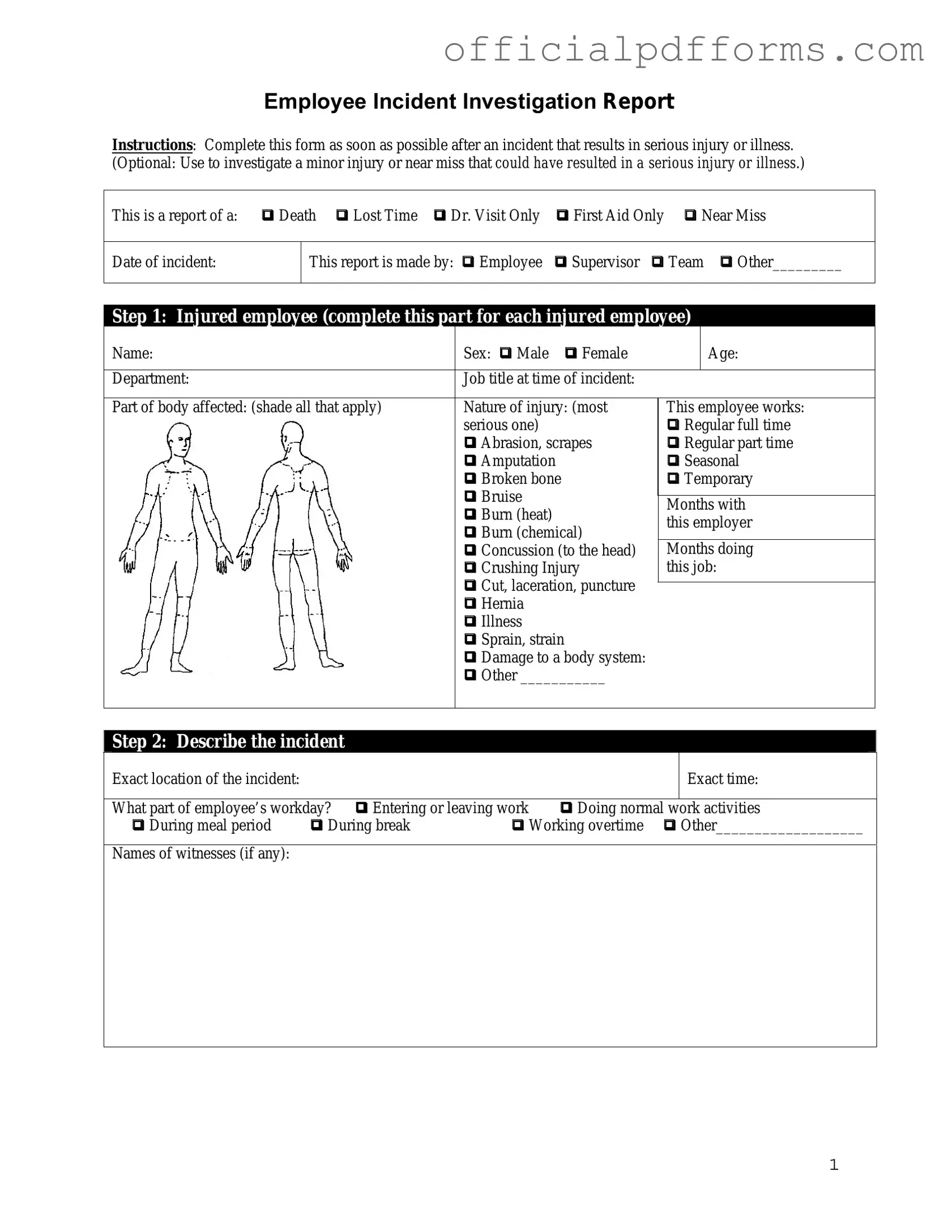The Employee Accident Report form is a document used to record details of any accidents that occur in the workplace. This form helps ensure that all incidents are documented accurately for safety reviews and potential claims.
The form should be completed by the employee who was involved in the accident. If the employee is unable to fill it out due to injuries, a supervisor or another witness may complete the form on their behalf.
The report should be filled out as soon as possible after the accident occurs. Timely reporting is crucial for proper documentation and to ensure that any necessary medical attention is provided promptly.
The form typically requires the following information:
-
Date and time of the accident
-
Location of the accident
-
Names of individuals involved
-
Description of the incident
-
Witnesses' names and contact information
-
Details of any injuries sustained
Yes, the information provided on the form is treated as confidential. It is used for internal purposes only, such as safety reviews and compliance with workplace safety regulations.
Once submitted, the report is reviewed by management or the HR department. They will investigate the incident further and may take necessary actions to prevent future accidents. Follow-up communication may occur if additional information is needed.
Many companies allow electronic submission of the Employee Accident Report form. Check with your HR department to see if this option is available. If not, a printed form should be completed and submitted in person.
What if I don’t remember all the details of the accident?
It’s understandable if you don’t recall every detail. Provide as much information as you can. You can always add more details later if you remember them or if witnesses can provide additional insights.
Filling out the form should not negatively impact your employment. It is a standard procedure aimed at improving workplace safety. Employers are typically committed to protecting employees and addressing safety concerns.
The form can usually be obtained from your HR department or safety officer. It may also be available on your company’s internal website or employee portal.
